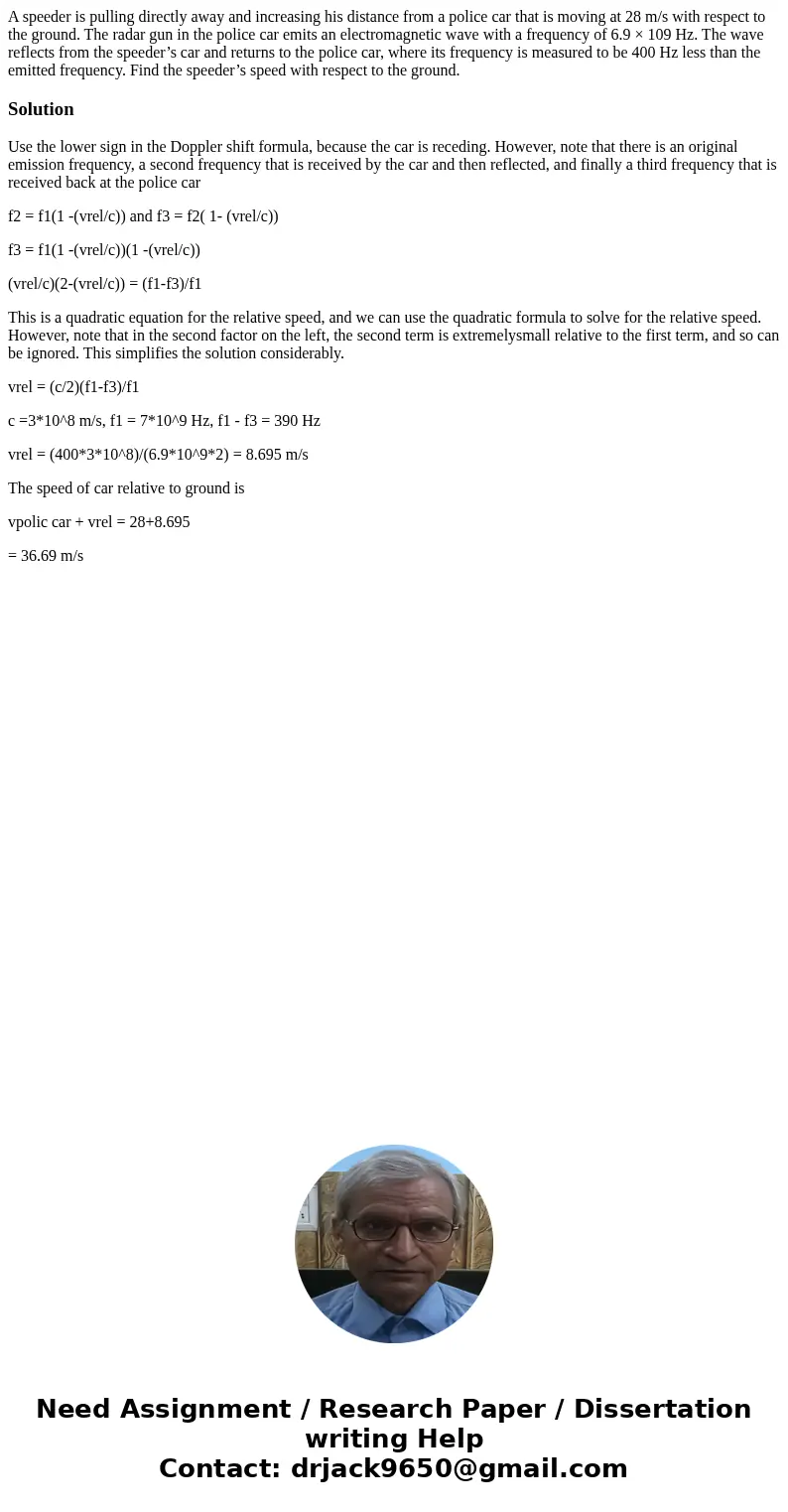A speeder is pulling directly away and increasing his distan
A speeder is pulling directly away and increasing his distance from a police car that is moving at 28 m/s with respect to the ground. The radar gun in the police car emits an electromagnetic wave with a frequency of 6.9 × 109 Hz. The wave reflects from the speeder’s car and returns to the police car, where its frequency is measured to be 400 Hz less than the emitted frequency. Find the speeder’s speed with respect to the ground.
Solution
Use the lower sign in the Doppler shift formula, because the car is receding. However, note that there is an original emission frequency, a second frequency that is received by the car and then reflected, and finally a third frequency that is received back at the police car
f2 = f1(1 -(vrel/c)) and f3 = f2( 1- (vrel/c))
f3 = f1(1 -(vrel/c))(1 -(vrel/c))
(vrel/c)(2-(vrel/c)) = (f1-f3)/f1
This is a quadratic equation for the relative speed, and we can use the quadratic formula to solve for the relative speed. However, note that in the second factor on the left, the second term is extremelysmall relative to the first term, and so can be ignored. This simplifies the solution considerably.
vrel = (c/2)(f1-f3)/f1
c =3*10^8 m/s, f1 = 7*10^9 Hz, f1 - f3 = 390 Hz
vrel = (400*3*10^8)/(6.9*10^9*2) = 8.695 m/s
The speed of car relative to ground is
vpolic car + vrel = 28+8.695
= 36.69 m/s

 Homework Sourse
Homework Sourse